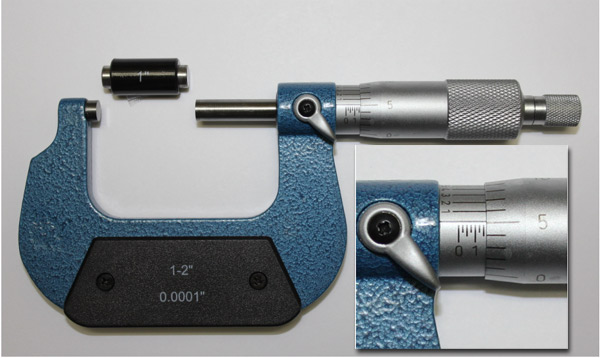In a toolbox, the micrometer is the weirdest-looking yet most versatile tool, and often the one that a building inspector or machinist will reach for first. The frequency of its use is neck and neck with some of the most popular test, measurement, and inspection tools. This is because it’s a device that’s very simple to handle, yet it always delivers exact and precise measurements of very small objects which cannot be measured by other measuring tools.
For a tool with such a wide range of uses it’s normal that the micrometer has received a number of alterations over the years. Today, this tool comes in a number of shapes and sizes, each serving a different purpose. But generally, micrometers fall into one of the following categories, and being able to differentiate between them can help you find the best one suitable for the job.

Outside Micrometers
This is the standard type of micrometer, the one that you can recognize by its distinct “P” shape. Despite being rather simple, this is the most widely used micrometer with the largest number of applications such as measuring wires, pipes, blocks. Outside micrometers are measuring tools capable of determining the width of things that are even thinner than a piece of paper. However, there are also much larger models which can measure objects with widths up to a meter.
Inside Micrometers
If there are outside models, there’s got to be inside micrometers too, right? And yes, there is. These types of micrometers are used to measure the inside of a tube or a hole. They are normally designed either as caliper-type or a tubular micrometer.
Depth Micrometers
If you need to measure how deep machine teeth, slots, or steps are, a specialized depth micrometer is the tool you need. Depth micrometers are usually sold in sets including measuring rods which you can use interchangeably.
Important Maintenance Tips
Micrometers are able to provide precise measurements that aren’t possible with other tools. If you want to get 100% accuracy every time, it is important to handle your micrometer with great care. Because it’s a tool that has metal components, you need to keep it away from water and regularly oil it up to prevent corrosion and rust. If you’re not using the micrometer for several months, oil it well from the inside as well before storing it away. Before each use, make sure to wipe it up with a dry and lint-free cloth to keep the tool free from dust and scrap that might result in a bad reading.



